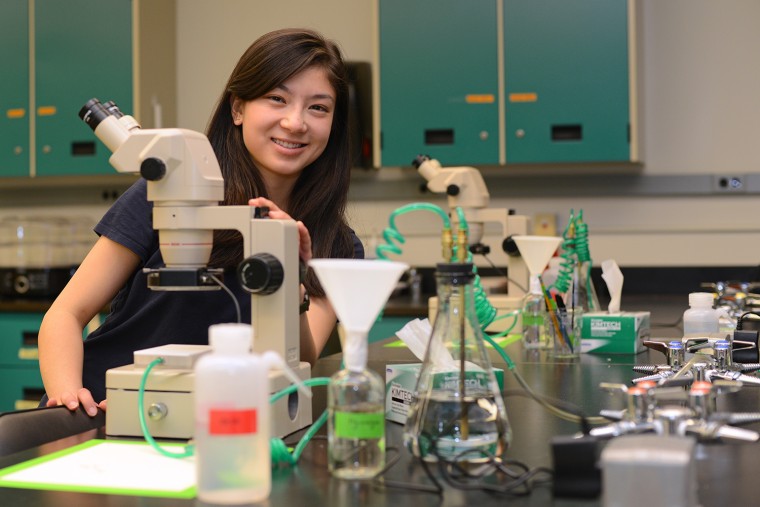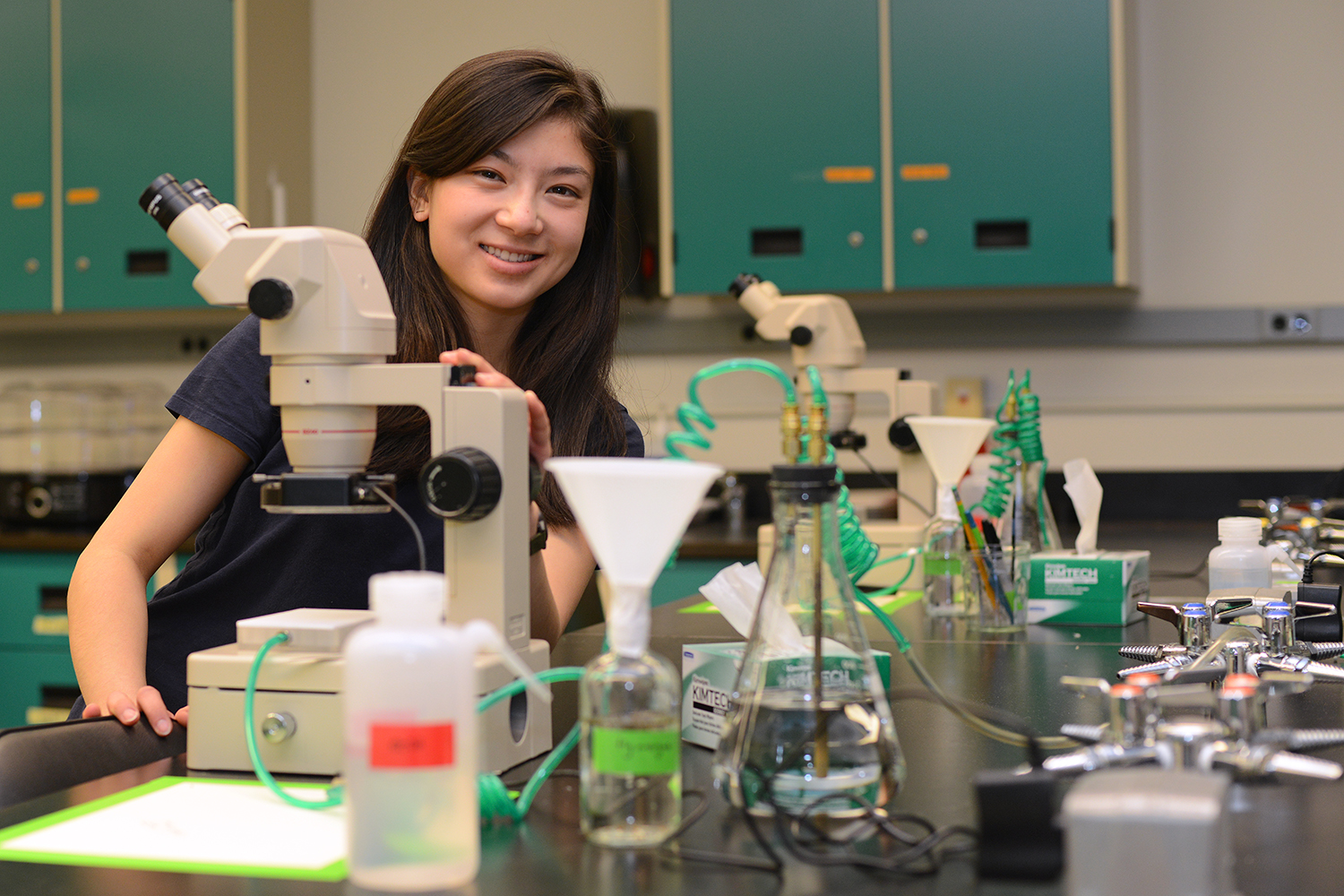Blatt ’17 Selected As a Doris Duke Conservation Scholar


Kai Blatt ’17 has been selected to take part in the Doris Duke Conservation Scholars Program at the University of Washington. This eight-week, all expenses paid “classroom-in-the-field” program helps students develop their vision for conservation, and gives them the natural and social science skills to become a conservation change-maker. The program is just entering its second year of existence, and this will be the second year a Wesleyan student has participated.
Blatt, who is from Los Angeles and plans to major in studio art and biology, learned of the program from her friend Joseph Eusebio ’17, who participated in the program during its inaugural session last summer. Read more about him here.
“He told me that one of their main goals was to diversify the environmental conservation movement,” Blatt said. “I’ve always been passionate about the environment, but I struggled with the idea that if I wanted to pursue art, it meant I wasn’t serious about it. The program sounded perfect in that they were looking for people who wanted to bridge varied interests and bring a wider range of approaches to the table.”
The Doris Duke Conservation Scholars Program accepted 24 new participants this year. The cohort will traverse “the urban jungle, rural areas and surrounding wild lands of Washington State” to explore four fundamental conservation themes: biodiversity, food, water and climate. They will visit one of the last and largest remaining temperate rainforests in the United States, an active volcano site, Olympic National Park, the Greater North Cascades ecosystem, and Seattle, among other places. They will explore questions such as “What is conservation and who has permission to do it?”; issues of habitat fragmentation, fire dynamics and water withdrawals; and how the practice of conservation applies to urban areas. See the full schedule here.
Students may choose to participate in the program for up to three years. The second year has students completing a project in Conservation Practice Teams, while the third involves conservation internships. Read more here.
Blatt’s interest in nature and conservation dates back to her childhood.
“I loved nature as a kid, so I think the first time I heard of species being endangered, and later of climate change, I became interested in conservation,” she said. “And living in Los Angeles, where our entire city is unnaturally sustained, it’s hard not to be aware of the importance and cost of resources like water. I’ve always been more interested in problem-solving than activism, and being at Wesleyan has made me more conscious of that.”
At Wesleyan, she took an introductory environmental studies course, in which she researched the material sourcing, processing and manufacturing of a pair of shoes.
“For me, this highlighted some major flaws in the production design of everyday objects,” she said. “Although I’m still figuring out what I ultimately want to do, I’ve been pursuing visual art and the natural sciences pretty evenly and I think the natural confluence of those two areas is design—something I’ve admittedly inherited from my architect parents. But it does give me the hope that I don’t have to compromise my artistic interests to help change the way we interact with the natural world.”
Blatt added that she loves the Pacific Northwest and is excited to spend time outdoors there.
“But I think I’m most looking forward to meeting the other scholars, passionate people with ideas and hopefully future collaborators on projects of our own design.”
Eusebio said of his experience in the program last summer, “The summer was tightly packed with incredible opportunities and experiences. We got to explore most of Washington during the eight weeks and the downtime became this wonderful place for sharing stories and talking about things from music and art to social issues. Each person came from such a wildly different background that the conversations were remarkably interesting and enlightening as a result. It was a beautiful summer and I’m excited to return for the second year.”
This summer, Eusebio will work on a project surveying bats on the San Juan Islands and another assisting with corridor restoration projects along the I-90 highway in the Cascade Mountain Range. He will also help to develop the “Voices of Cascadia” project, which compiles interviews with people of the region about their connection to the environment.

